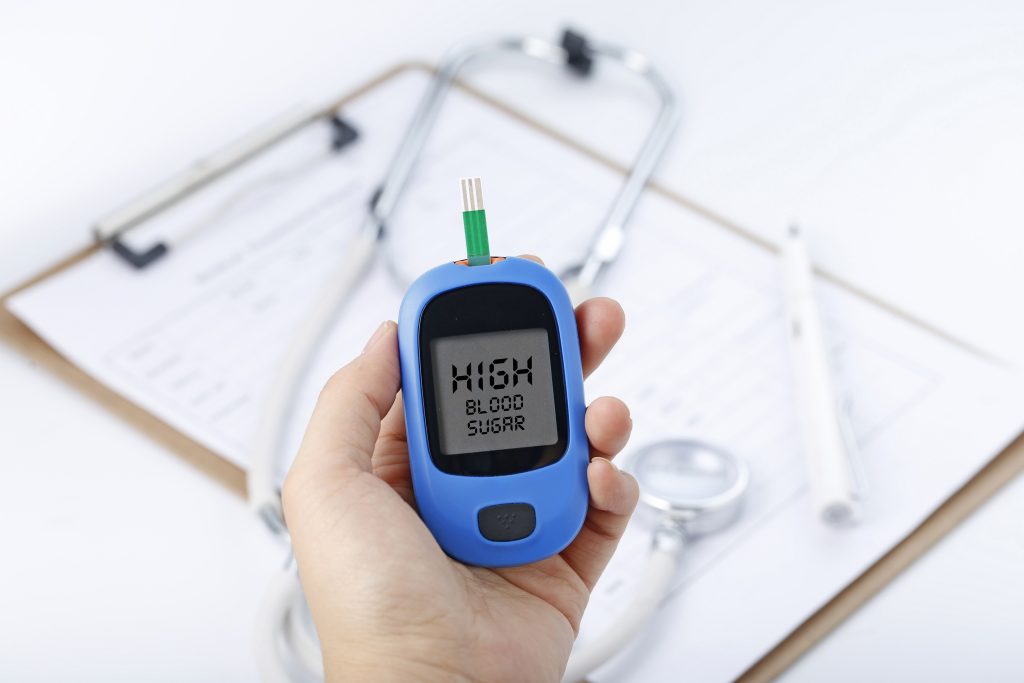Diabetes affects many individuals globally, and in Singapore, the prevalence of people living with diabetes is about one in twelve residents, according to the Ministry of Health (MOH). However, doctors have said in a report from Channel News Asia that these days, they are seeing patients as young as 30 years old having the chronic health condition.
What makes diabetes a challenging condition to deal with is that it is often called the “silent” disease since patients may experience mild or no symptoms at all in the early stages. But when the disease progresses, it manifests in various ways, including eye issues like cataracts.
How Diabetes Can Cause Cataracts
There are various reasons why individuals with diabetes may be prone to cataracts. Generally, people with high blood sugar can experience damage in the blood vessels, causing swelling in the liquid between the cornea lens and eyeball.
Damage in Blood Vessels
Diabetic individuals experience either an inadequate production of insulin or the body’s inability to effectively use the aforementioned hormone.
The primary role of insulin is to deliver glucose from the bloodstream into the cells to serve as an energy source for the body. And when there is insufficient insulin in the body, glucose may not be able to enter the cells, leading to its accumulation in the bloodstream. This elevated level of glucose results in high blood sugar.
Maintaining high blood sugar for an extended period can damage the blood vessels, including those in the eyes. As a result, the vascular damage significantly heightens the risk of developing cataracts.
Swelling of Aqueous Humour
Another contributing factor in the development of cataracts pertains to the aqueous humour, the fluid that occupies the gap between the eyeball and the cornea lens.
Elevated glucose levels in the aqueous humour can induce swelling of the lens, leading to blurred vision. A study conducted in 2021 involving 37 individuals with diabetes and cataracts revealed heightened glucose levels in the aqueous humour. Notably, those individuals facing greater challenges in managing blood sugar exhibited the highest concentrations of glucose in the aqueous humour.
Moreover, when diabetes is not managed, the enzyme in the cornea’s lens converts glucose into sorbitol, which can cause swelling in the lens and blurred vision.
Diabetic Cataract Symptoms to Watch Out For
Diabetic individuals should be vigilant of cataracts as the symptoms of the disease may not even show during its early stages. However, when the cataract develops into its immature and mature stages, it may manifest in the following vision problems:
- Blurred or cloudy vision
- Floaters or spots in vision
- Minimal intensity in colours
- Sensitivity to light
- A halo of light around lights in the vision
- Yellowing of vision
- Vision changes that need a change in eyeglass prescription

How to Prevent Cataracts in Individuals with Diabetes
While diabetes may increase the risk of cataracts, there are steps that can be taken to mitigate this risk:
1. Comprehensive Health Management
Proper health management involves not only controlling blood sugar but also managing blood pressure and cholesterol levels. This approach addresses multiple factors that can contribute to the progression of cataracts.
Ways diabetic individuals can integrate proper health management include the following:
- Regular health check-ups to monitor blood sugar, blood pressure, and cholesterol.
- Consultation with healthcare professionals to develop personalised management plans.
- Adherence to prescribed medications and lifestyle recommendations provided by healthcare professionals.
2. Smoking Cessation
For those who smoke, quitting is a crucial step in reducing the risk of cataracts. This is because smoking has been linked to numerous health complications, including those affecting the eyes. By quitting smoking, individuals could help improve blood circulation in the eye, reducing oxidative stress and contributing to a lower risk of cataracts.
3. Balanced Diet with Antioxidant-Rich Foods
Nutrition plays a pivotal role in both maintaining healthy blood sugar and eye health. Maintaining a balanced diet that includes vegetables and fruits rich in antioxidants promotes better regulation of glucose metabolism and increases insulin secretion. As a result, this helps combat oxidative stress, which is a contributing factor to cataract formation.
4. Regular Diabetic Eye Check-Ups
Consistent monitoring of eye health through regular diabetic eye check-ups is paramount.
Undergoing diabetic eye examinations not only detect early signs of cataracts and other eye issues but also provide an opportunity for proactive intervention. Moreover, eye specialists can offer comprehensive insight and guidance based on individual health conditions.
Find the Right Eye Care Specialist for Your Condition
When selecting an eye specialist clinic for your condition, prioritise those with expertise in both diabetic eye care and cataract treatment in Singapore. Specialisation in both areas ensures a comprehensive understanding of the specific challenges posed by diabetes on eye health, offering tailored solutions for managing cataracts within the context of diabetes.
Know that the right eye care specialists not only diagnose and manage your condition but also offer guidance on lifestyle adjustments, preventive measures, and proper diabetic eye care.

Dr. Christopher Khng, specializes in Complex Cataract and Anterior Segment Reconstruction Surgery, in particular, Iris Reconstruction and surgery for Aniridia. His other areas of expertise include Complex Lens surgery, New Lens and Phacoemulsification technologies, Refractive surgery, Phakic IOLs (the Implantable Collamer Lens, ICL), and small-incision, topical anesthesia phacoemulsification cataract surgery. Dr. Khng is a member of the Singapore Medical Association (SMA), a Fellow of the American Academy of Ophthalmology, the American Society of Cataract and Refractive Surgery (ASCRS), and the European Society of Cataract and Refractive Surgery (ECSRS). He is registered with the Singapore Medical Council (SMC) in Singapore and with the General Medical Council (GMC) for practice in the United Kingdom.

